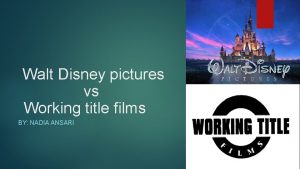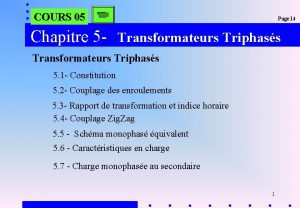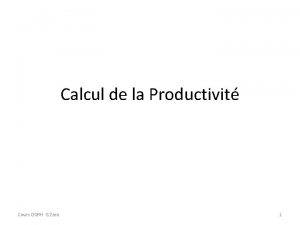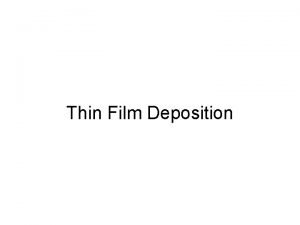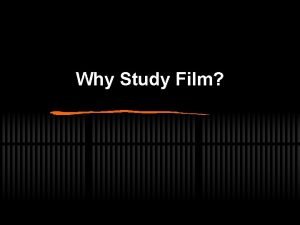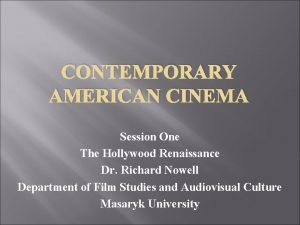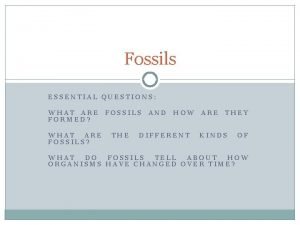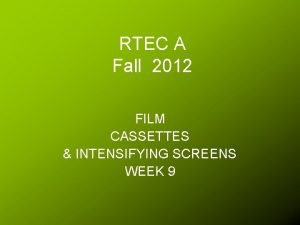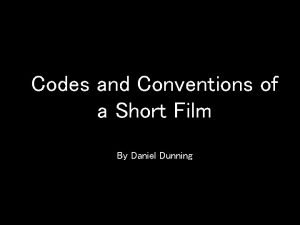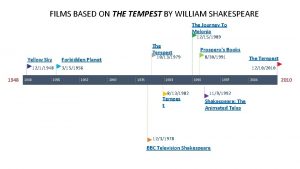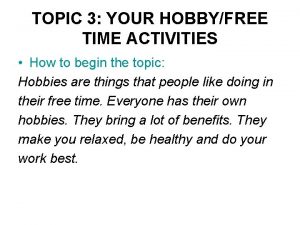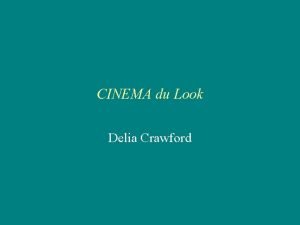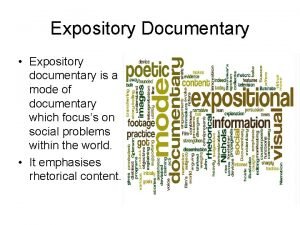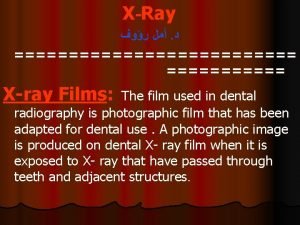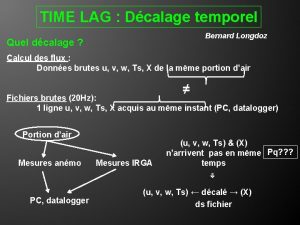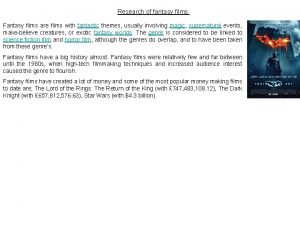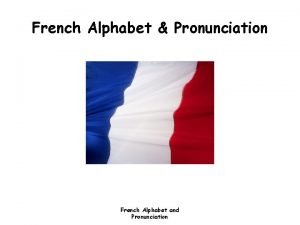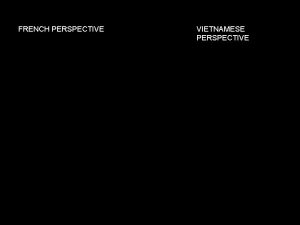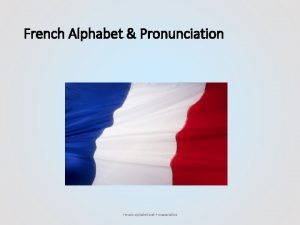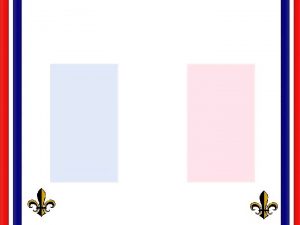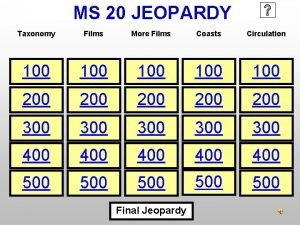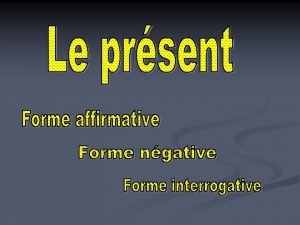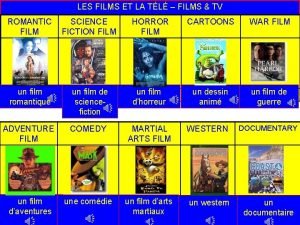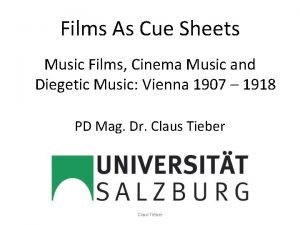Dcalage horaire French films in top 20 at











![Defining the rom-com The genre of rom-com can [. . . ] be seen Defining the rom-com The genre of rom-com can [. . . ] be seen](https://slidetodoc.com/presentation_image/bfda774d250a3dccb3e77b7771cebd5d/image-12.jpg)



![Anti-Americanism in Contemporary French Cinephilic Culture ‘For [Cahiers du cinéma critic Jean-Michel] Frodon and Anti-Americanism in Contemporary French Cinephilic Culture ‘For [Cahiers du cinéma critic Jean-Michel] Frodon and](https://slidetodoc.com/presentation_image/bfda774d250a3dccb3e77b7771cebd5d/image-16.jpg)















- Slides: 31

Décalage horaire

French films in top 20 at French box office in 2009 1. Le Petit Nicolas/ Little Nicholas (Laurent Tirard, France/ Belgium) 2. Lol (Laughing Out Loud) (Lisa Azuelos) 3. Arthur et la vengeance de Maltazard/ Arthur and the Great Adventure (Luc Besson) 4. Coco/ Coco Before Chanel (Anne Fontaine) 5. Neuilly sa mère (Gabriel Laferrière) 6. OSS 117 Rio ne répond plus/ OSS 117 – Lost in Rio (Michel Hazanavicius) Data sourced from CNC France


French films in top 10 at French box office in 1962 1. La Fayette/ Lafayette (Jean Dréville, France/Italy) 2. Cartouche/ Swords of Blood (Philippe de Broca, France/Italy) 3. Les Mystères de Paris/ Devil of Paris (André Hunebelle, France/Italy) 4. Le Repos du guerrier/ Warrior’s Rest (Roger Vadim, France/Italy) 5. Madame Sans-Gêne/ Madame (Christian Jacques, Italy/France/Spain) Data sourced from CNC France


The Contemporary French Film Industry • An industry in rude health today. • Popular domestic fare as the key factor; Waldron and Vanderschelden (2007) note that ‘audience demand for domestic productions has risen fairly sharply in recent years’ and since the turn of this century especially. • See also Palmer (2011) on French cinema as ‘a field with intellectual ambitions that also courts widespread popularity’ (p. 2).

Domestic French Film Production Figures 1995 -2009 Total French film production 100% French-financed productions 1995 97 63 2000 145 111 187 126 182 137 2005 2009 See Palmer p. 8 (Figures sourced from CNC France)

Danièle Thompson • Daughter of Gerard Oury, famous French comic; prolific screenwriter e. g. of such major films as La Grande vadrouille (1966) and La Reine Margot (1994). • Filmography as director: La Bûche (1999); Décalage horaire (2002) Fauteuils d’orchestre (2006); Le Code a changé (2009); Des gens qui s’embrassent (2013) – rom-coms/family narratives. • Lived in the US – Décalage had a modest release there as Jet Lag but did best in France (over a million admissions).

The ‘Problem’ of Genre in French Film Studies • Pierre Sorlin (2005) ‘Le Cinéma français a-t-il échappé à la tentation des genres? ’, in R. Moine (ed. ) Le Cinéma français face aux genres. Argues that French cinema is still flourishing despite the advent of television because it does not rely on genres. • Scandalous absence of Bienvenue chez les Ch’tis from 2008 César awards. • René Prédal (1993), ‘French cinema does not rely on genres [. . . ] because it has always taken another direction, what we call the “psychological film” until the 1950 s, and then “auteur cinema” since the New Wave. ’ René Prédal ‘Le Cinéma français et les genres, ’ p. 54

ROMANTIC COMEDY • The most vile, insipid, sanity-destroyingly horrible genre in the history of cinema. The romantic comedy is a genre of movie, usually mainstream, that follows a fairly consistant formula: boy meets girl, silly shit happens, low-intensity comedy insues, mild disasters averted, boy and girl get married and live happily ever after, the end. This formula never changes, for if there were the slightest deviation, it would not ba a romantic comedy. • This genre exists solely for the entertainment of obnoxious, highly sentimental housewives who feel that their gender must consign them to this terrible fate. For them, to be feminine is to be an obnoxious, hand-wringing milksop. This is similar to the viewpoint among men that to be masculine is to be an obnoxious, belligerent neanderthal who crushes beer cans with his forehead. • Romantic comedy is cinematic anti-matter. It is the opposite of art, and can not, by nature, be creative or original in any way. Romantic comedies are as plentiful as they are unbearable, due to the consistent market for sappy, brain-dead entertainment. A watcher of romatic comedies never gets tired of the same plot, over and over again, and therefore can watch the same movie, with subtle variations, thousands of times over a lifetime, viewing each new clone as if it were the first. by Bort P. Krunt September 25, 2006

Romantic comedy as bad object ‘Boundary patrolling by critical institutions’ guarantees the genre’s purity and superficiality. The rom-com is the victim of a circular argument whereby ‘only those films that include certain conventions and “conservative” perspectives on relationships are rom-coms and therefore rom-coms are the most conservative of all genres’. Anything ‘mildly interesting’ in cinematic or ideological terms is not a rom-com. See Celestino Deleyto (2009), The Secret Life of Romantic Comedy (Manchester: Manchester University Press).
![Defining the romcom The genre of romcom can be seen Defining the rom-com The genre of rom-com can [. . . ] be seen](https://slidetodoc.com/presentation_image/bfda774d250a3dccb3e77b7771cebd5d/image-12.jpg)
Defining the rom-com The genre of rom-com can [. . . ] be seen as the intersection of three, closely interrelated elements: - a narrative that articulates historically and culturally specific views of love, desire, sexuality and gender relationships; - a space of transformation and fantasy which influences the narrative articulation of those discourses; - and humour as the specific perspective from which the fictional characters, their relationships and the spectator’s response to them are constructed as embodiments of those discourses. Celestino Deleyto, The Secret Life of Romantic Comedy, 2009, pp. 45 -6.

French cinephilic suspicion of popular and ‘American’ forms ‘Il est sûr que la ‘contamination’ par la télévision prend la forme - dans le champ spécifique du cinéma - d’une véritable “vampirisation” qui s’ajoute à l’hégémonie de la production américaine. ’ Prédal, René (2008) Le Cinéma français depuis 2000: un renouvellement incessant (Paris: Armand Colin).

Franco-American relations since World War II • Part of a wider debate about modernisation, at a time when North American culture flooded into Europe often tied conditionally to economic aid – see Richard Kuisel, Seducing the French: The Dilemma of Americanization (Berkeley: University of California Press, 1993) • Even after France engages in the modernisation of its material infrastructure, the debate between ‘modernists’ and ‘protectionists’ continues. • e. g. Farmers’ protests against globalisation in the late 1990 s; as recently as 2009, British Francophile journalist Lucy Wadham suggests that where you stand on the question of the ‘Anglo-Saxon model’ is the central question defining French people today, cutting across political affiliations – Wadham (2009), The Secret Life of France (London: Faber and Faber); cf. 2010 French protests about pension reform.

Franco-American relations since World War II Continued. • 1980 s: questioning of the universal role of French civilisation. In a famous 1982 speech Minister of Culture Jack Lang decries ‘a certain invasion, a certain influx of images produced elsewhere. . . ’ and called for ‘a veritable cultural resistance. A veritable crusade against – lets give it its true name – this financial and cultural imperialism. ’ Conférence mondiale des ministres de la culture, organised by Unesco, Mexico, July 1982 • ‘Indeed, it is within the cultural field that France has frequently been most likely to display anxieties about America and an attendant nationalism. France has had some sort of centralised cultural policy since the Renaissance. Its sense of cultural identity tends to be defined in opposition to cultures of other nations, and America, as a dominant alternative model, has played a central role in this process of construction. ’ Lucy Mazdon (2000), Encore Hollywood: Remaking French Cinema (London: BFI), p. 7. • e. g. Furore around the opening of Euro-Disney and the ‘coca-colanisation’ of French culture; heated reactions to the Uruguay Round of the General Agreement on Tariffs and Trade (GATT) in 1993 and the establishment of the exception culturelle (see Mazdon, p. 9)
![AntiAmericanism in Contemporary French Cinephilic Culture For Cahiers du cinéma critic JeanMichel Frodon and Anti-Americanism in Contemporary French Cinephilic Culture ‘For [Cahiers du cinéma critic Jean-Michel] Frodon and](https://slidetodoc.com/presentation_image/bfda774d250a3dccb3e77b7771cebd5d/image-16.jpg)
Anti-Americanism in Contemporary French Cinephilic Culture ‘For [Cahiers du cinéma critic Jean-Michel] Frodon and other critics of recent French films, the term “popular” is associated with a multi-faceted crisis, evident not only in [. . . ] exaggerated production costs, but also in that films enjoy far shorter runs at cinemas than in the past. ’ Waldron, Darren and Isabelle Vanderschelden (2007), ‘Introduction, ’ in France at the Flicks: Trends in Contemporary French Popular Cinema (Cambridge: Cambridge Scholars Publishing), p. 8.

And yet… ‘The practice of combining generic features drawn from a national cultural tradition within a form, references and generic paradigms that are at least perceived as belonging to a globalised neo-Hollywood model, constitutes one of the defining tendencies of contemporary French popular cinema. ’ Raphaëlle Moine, Raphaëlle. ‘Genre Hybridity, National Culture, Globalised Culture, ’ in Moine (ed. ), Le Cinéma français face aux genres (Paris: Association française de recherche sur le cinéma, 2005), p. 36.

French Rom-Coms Hors de prix (Pierre Salvadori, 2006) Prête-moi ta main (Eric Lartigau, 2006) De vrais mensonges (Pierre Salvadori, 2010) L’Arnacoeur (Pascal Chaumeil, 2010)

Explosion of the Global (Hollywood) Rom-Com in the 1980 s and 1990 s • ‘the trend in most years [since 1981] is towards a much higher volume of production – with especially sustained activity from 1997 -9. ’ (Krutnik 2002, p. 131). • Films like When Harry Met Sally and Pretty Woman (1990) enormously popular in France as elsewhere (1. 9 million and 4 million tickets sold there respectively).

Women Directors in France 1990 s: 14% (up 60% compared to 1980 s; contrast with 10. 2% in the US in 1999) Tarr, Carrie with Brigitte Rollet (2001), Cinema and the Second Sex: Women’s Filmmaking in France in the 1980 s and 1990 s (London and New York: Continuum). 2000 s: up to 19. 4% in 2009 Vincendeau, Ginette (2010), ‘The Rise and Rise of French Women Filmmakers: Victory for Feminism or French Exception? ’ Paper delivered at ‘Women’s Filmmaking in France 2000 -201 Conference, Institute of Germanic and Romance Studies, London, 4 December.

Screwball Comedy – early 1930 s to 1940 s (and beyond? ) A ‘genre of madcap romance’ (Wes D. Gehring); a ‘sex comedy without sex’ (Andrew Sarris). Characterised by fast-paced repartee and strong female characters.

The ‘nervous romance’ (Frank Krutnik) - 1970 s. Stronger female characters demanding sexual fulfilment in the post-liberationist era; realism over romance.

Contemporary French Rom-Com as ‘Battle of the Sexes’ film • France has Europe’s lowest marriage rate (50 per 10, 000 citizens). • Yet it has Europe’s second-highest birthrate (after Ireland). • High numbers of women also return to work after having children in France. Gazon maudit, 1995

Second-Wave Feminism: the Condemnation of Heterosexual Romance For Simone de Beauvoir, romance (and, in her epoch, marriage specifically) is the fate assigned to women by a society ruled by men. It is intrinsically inimical to the development of individual or authentic identity by women, which for her is self-created and therefore cannot be attained through another person. She describes marriage as the antithesis of a free, reciprocal relationship; she links economic oppression of women to their sexual frustration; and she describes the traditional wedding night as a ceremonious version of rape. Simone de Beauvoir: The Second Sex, ed. and trans. H. M. Parshley, (London: Random House, 1997), pp. 445 -65. First published in 1949.

The legacy for some contemporary feminist critics • For Brigitte Rollet, the rom-com has ‘implicitly reactionary ideology’ thanks to its ‘fairytale’ happy ending.

Laura Mulvey suggests that the importance of narrative’s potential lies not in its final resolution but the upheaval that precedes this Mulvey, ‘Changes: Thoughts on Myth, Narrative and Historical Experience, ’ Discourse 7 (Fall 1985): 11 -30, quoted in Rowe, p. 8.



Self-reflexivity in the rom-com • ‘the problem of the “already said” emerges as a particularly delicate issue in the contemporary films because they must salvage romance from the emotional debris of the 1960 s and 1970 s’. • ‘many comedies [invoke] keynote romantic texts of the past’ (Krutnik 2002, pp. 139 -40) • E. g. quotations from love songs or other films. Don Jon (Joseph Gordon Levitt, 2013)

Additional Bibliography • • Mary Harrod, ‘The Réalisatrice and the Rom-Com in the 2000 s, ’ Studies in French Cinema, Special Issue on ‘Women’s Filmmaking in the 2000 s, ’ vol. 12, no. 3 (2012), pp. 227 -240. Mary Harrod, ‘Franglais, Anglais and Contemporary French Comedy, ’ in M. Harrod, M. Liz and A. Timoshkina (eds), The Europeanness of European Cinema: Identity, Meaning, Globalization, (London: I. B. Tauri, 2015), pp. 145 -159. • Frank Krutnik, ‘Conforming Passions? Contemporary French Romantic Comedy, ’ in Steve Neale (ed. ), Genre and Contemporary Hollywood (London: BFI, 2002), pp. 130 -48 • Tim Palmer, ‘The Contemporary French Film Ecosystem, ’ in Brutal Intimacy. Analyzing Contemporary French Cinema (Middletown CT: Wesleyan University Press, 2011), pp. 1 -13. • René Prédal, ‘Le Cinéma français et les genres, ’ Cinémaction 68 (1993): 54 • Brigitte Rollet, ‘Transatlantic Exchanges and Influences: Décalage horaire (Jet Lag), Gender and the Romantic Comedy `a la française. ’ In S. Abbott and D. Jermyn (eds), Falling in Love Again: Romantic Comedy in Contemporary Cinema (London: I. B. Tauris, 2008), pp. 92– 104. • Pierre Sorlin, ‘Le Cinéma français a-t-il échappé à la tentation des genres? ’, in R. Moine (ed. ) Le Cinéma français face aux genres (Paris: Association française de recherche sur le cinéma, 2005), pp. 15 -24. • Darren Waldron and Isabelle Vanderschelden. ‘Introduction. ’ in D. Waldron and I. Vanderschelden (eds), France at the Flicks: Trends in Contemporary French Popular Cinema (Cambridge: Cambridge Scholars Publishing, 2007), pp. 1– 15.

FÉLIX: ‘Une nuit, un aéroport, un homme, une femme, eh bien non, je ne veux pas être un souvenir Rose, fuck la logique, d’accord la vie c’est pas un Hollywood movie, les happy ends c’est du bullshit, d’accord j’arrive pas à parler une seule langue à la fois mais qu’est-ce qu’on en a à foutre!’ Jet-Lag, 2002
 Working title television
Working title television Couplage zig zag
Couplage zig zag Ogrh
Ogrh Parc à conteneur bastogne horaire
Parc à conteneur bastogne horaire Grille horaire cap
Grille horaire cap Horaire 2ex gorge de loup chazelle
Horaire 2ex gorge de loup chazelle Readymade films
Readymade films Team plus hr services pvt ltd
Team plus hr services pvt ltd Alternative films
Alternative films Nieuwsgroepen films downloaden
Nieuwsgroepen films downloaden Characteristics of a documentary
Characteristics of a documentary How to analyze a movie
How to analyze a movie St trinians films
St trinians films Describing films
Describing films Https //yandex.ru/video/preview/ text
Https //yandex.ru/video/preview/ text Hollywood renaissance films
Hollywood renaissance films Melinex 401
Melinex 401 Interactive movie maker
Interactive movie maker Thin films testing
Thin films testing Questions about fossils
Questions about fossils Radiographic films
Radiographic films Yandex.ru films
Yandex.ru films Bulge test thin films
Bulge test thin films Short film conventions
Short film conventions Claus tieber
Claus tieber Why use single camera production
Why use single camera production The tempest movie 1992
The tempest movie 1992 In his course steven roberts uses original films with
In his course steven roberts uses original films with My hobby is watching films
My hobby is watching films Beiniex
Beiniex Expository mode of documentary
Expository mode of documentary The purpose of a lead foil sheet in the film packet is
The purpose of a lead foil sheet in the film packet is
